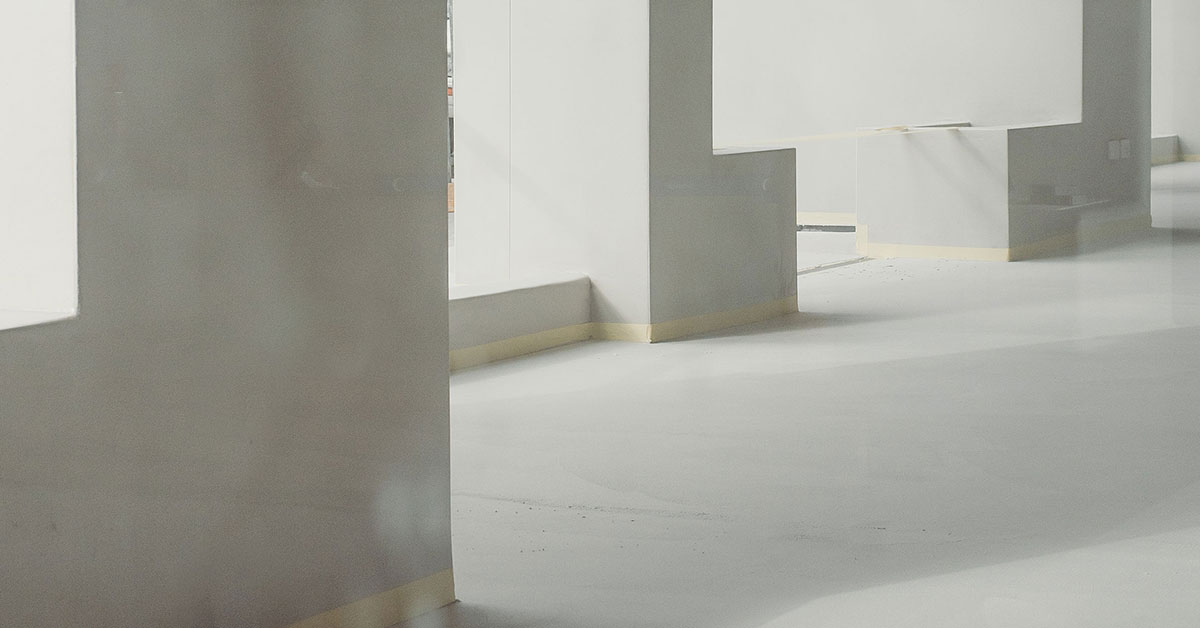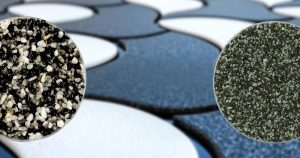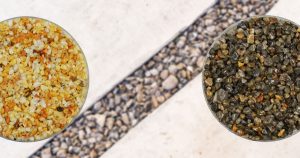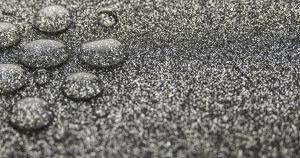When it comes to modern flooring solutions, microtopping has revolutionized the way homeowners and contractors approach surface renovations. This innovative material, which can cut renovation time in half compared to traditional demolition methods, consists of a specialized thin layer of microcement that’s rapidly becoming the go-to choice for those seeking durability combined with stunning visual appeal. Whether you’re planning a residential makeover or a commercial renovation project, understanding the complete picture of microtopping pros and cons becomes essential for making an informed decision that aligns with your budget, timeline, and aesthetic goals.
This comprehensive guide will take you through the seven most critical aspects of microtopping technology, exploring everything from its unique composition and versatile applications to its long-term durability and maintenance requirements. By examining both the advantages and potential challenges of this decorative concrete solution, you’ll gain the knowledge needed to determine whether microtopping represents the perfect flooring option for your specific project needs.
Table of Contents
Understanding Microtopping and Its Composition
What is Microtopping?
Microtopping represents a sophisticated evolution in surface coating technology, combining the durability of traditional concrete with the aesthetic flexibility that modern design demands. This versatile option for different design styles consists of a polymer-modified cement-based system that creates an exceptionally smooth, durable surface when professionally applied. Unlike conventional flooring materials that often require extensive demolition and preparation work, microtopping offers the unique advantage of being applied over existing surfaces without the need for costly and time-consuming removal processes.
The beauty of this innovative material lies in its ability to transform virtually any substrate, whether you’re working with old concrete floors, ceramic tiles, or even properly prepared wood surfaces. This flexibility makes it an excellent choice for renovation projects where preserving the existing structure while achieving a completely new aesthetic becomes a priority.
Materials Used in Microtopping
The success of any microtopping installation depends heavily on the quality and combination of its core ingredients, each serving a specific purpose in creating the final product’s exceptional performance characteristics. Portland cement forms the foundational base of the system, providing the structural integrity and bonding capabilities that ensure long-term adhesion to various substrates. Acrylic polymers are then integrated into the mix, significantly enhancing the material’s flexibility, adhesion properties, and overall durability while reducing the likelihood of cracking under normal stress conditions.
Fine sand particles contribute the desired texture and add dimensional stability to the coating, while carefully selected mineral pigments provide the wide range of colors that make microtopping such a popular choice among designers and architects. This sophisticated blend of materials results in a coating that not only performs exceptionally well under various environmental conditions but also maintains its appearance and structural integrity for many years when properly maintained.
Component | Function | Benefit |
Portland Cement | Base structure | Provides strength and bonding |
Acrylic Polymers | Flexibility enhancer | Improves adhesion and crack resistance |
Fine Sand | Texture provider | Adds dimensional stability |
Mineral Pigments | Color system | Enables wide color range options |
Applications of Microtopping
The versatility of microtopping extends far beyond traditional concrete floors, making it suitable for an impressive range of applications in both residential and commercial spaces. In wet areas such as bathrooms and kitchens, microtopping’s natural resistance to moisture and its seamless finish make it particularly valuable, as it eliminates the grout lines that typically harbor bacteria and require extensive maintenance in traditional tile installations.
For high-traffic areas such as entryways, commercial lobbies, and retail spaces, the material’s exceptional durability and resistance to everyday wear and tear make it an ideal solution that maintains its aesthetic appeal even under demanding conditions. The ability to apply this concrete coating on both floors and walls opens up unlimited design possibilities, allowing architects and designers to create cohesive, flowing spaces that would be impossible to achieve with traditional materials.
Microtopping Pros and Cons: The Complete Analysis
1. Durability and Longevity Advantages
One of the most compelling aspects when examining microtopping pros and cons involves its exceptional durability characteristics, which set it apart from many traditional flooring materials. When properly installed and maintained, microtopping surfaces can last for many years while maintaining their original appearance and structural integrity, often exceeding 25 years of reliable service life. This longevity makes it particularly valuable for high-traffic areas where other materials might show significant wear and require frequent replacement or extensive maintenance.
The durable and resistant to wear nature of microtopping stems from its sophisticated polymer-modified composition, which creates a surface that can withstand heavy foot traffic, resist staining, and maintain its smooth finish even under challenging environmental conditions. Unlike traditional flooring materials that may chip, crack, or fade over time, properly applied microtopping maintains its integrity and appearance with minimal intervention.
2. Aesthetic Flexibility and Design Options
The second crucial consideration in microtopping pros and cons centers around the material’s remarkable ability to adapt to virtually any design vision or architectural style. This coating that provides a smooth and seamless finish can be customized to achieve everything from ultra-modern minimalist aesthetics to more textured, artisanal appearances that complement traditional design elements.
Microtopping offers designers and homeowners an unprecedented range of creative possibilities, with the ability to create custom colors, patterns, and textures that would be difficult or impossible to achieve with conventional materials. The seamless nature of the application means that large areas can be covered without joints or transition strips, creating flowing, uninterrupted surfaces that enhance the perceived size and elegance of any space.
Design Benefit | Traditional Materials | Microtopping |
Color Options | Limited by manufacturer | Unlimited custom colors |
Seamless Finish | Requires joints/grout | Completely seamless |
Texture Variety | Fixed patterns | Customizable textures |
Pattern Flexibility | Pre-made designs | Unlimited creativity |
3. Installation Efficiency and Surface Preparation
The third critical factor in microtopping pros and cons involves understanding both the advantages and requirements of the installation process. One of the most significant benefits of choosing microtopping lies in its ability to be applied over existing surfaces with minimal preparation, dramatically reducing the time, cost, and disruption typically associated with major renovation projects. This without the need for extensive demolition work means that projects can be completed faster while reducing waste and minimizing environmental impact.
However, proper surface preparation remains crucial for achieving optimal results, and this represents one area where professional expertise becomes invaluable. The existing substrate must be thoroughly cleaned, properly profiled, and in some cases, primed to ensure adequate adhesion and prevent future issues such as delamination or uneven appearance.
4. Maintenance Requirements and Cleaning Protocols
The fourth essential aspect of microtopping pros and cons focuses on the long-term maintenance requirements that property owners must understand before making their investment decision. Fortunately, microtopping is easy to clean and maintain, requiring only basic cleaning protocols to preserve its appearance and performance characteristics over time.
Regular maintenance involves using a pH-neutral cleaner and avoiding harsh chemicals that could potentially damage the protective sealer or alter the surface appearance. The seamless nature of microtopping eliminates the problematic grout lines found in tile installations, making routine cleaning significantly more efficient and effective while preventing the accumulation of dirt and bacteria in hard-to-reach areas.
5. Cost Considerations and Return on Investment
When analyzing microtopping pros and cons, the fifth crucial consideration involves understanding the complete cost picture, including both initial investment and long-term value proposition. While microtopping installation costs typically range from $3 to $7 per square foot, this initial investment often proves economical when compared to the total lifecycle costs of alternative materials that may require more frequent replacement, extensive maintenance, or periodic refinishing.
When it comes to cost analysis, property owners must consider not only the installation price but also the significant savings achieved through reduced demolition requirements, shorter project timelines, and lower long-term maintenance expenses. The durable and easy to clean nature of microtopping means that properties can maintain their value and appearance with minimal ongoing investment.
6. Performance in Different Environments
The sixth important factor in microtopping pros and cons involves understanding how this material performs across various environmental conditions and applications. Microtopping is highly adaptable to different climatic conditions and usage patterns, performing well in both indoor and outdoor surfaces when properly sealed and maintained.
In commercial applications, the material’s resistance to heavy traffic and its ability to maintain appearance under demanding conditions make it particularly valuable for retail spaces, restaurants, and office buildings. For residential applications, its suitable for outdoor use characteristics mean that it can create seamless transitions between interior and exterior spaces while maintaining consistent aesthetic appeal.
7. Potential Limitations and Considerations
The seventh and final aspect of microtopping pros and cons involves honestly examining the potential limitations and challenges that property owners should understand before proceeding with their project. While microtopping is generally an excellent solution for many applications, certain conditions may present challenges that require careful consideration and professional expertise to address effectively.
Microtopping requires skilled installation to achieve optimal results, and attempting DIY application can lead to problems such as uneven coverage, poor adhesion, or premature failure. Additionally, depending on the surface condition and substrate type, some projects may need more extensive preparation work than initially anticipated, potentially affecting both timeline and budget considerations.
Advanced Comparison: Microtopping vs. Traditional Materials
Factor | Microtopping | Tile | Hardwood | Polished Concrete |
Installation Time | Fast (1-3 days) | Medium (3-7 days) | Medium (2-5 days) | Slow (5-10 days) |
Demolition Required | Minimal | Often required | Usually required | Sometimes required |
Seamless Finish | Yes | No (grout lines) | No (board gaps) | Yes |
Color Customization | Unlimited | Limited | Natural only | Limited |
Maintenance Level | Low | Medium-High | High | Medium |
Lifespan | 25+ years | 15-20 years | 20-30 years | 20+ years |
Terrazzo GraniTech: The Superior Alternative to Traditional Microtopping
While traditional microtopping systems have served the industry well, the evolution of surface technology has brought forth an even more advanced solution that addresses the inherent limitations of cement-based systems. Terrazzo GraniTech represents what many industry experts now consider the advanced evolution of microtopping technology, combining the application ease and versatility that made microtopping popular with revolutionary performance improvements that eliminate many traditional concerns.
Unlike conventional microtopping systems that rely on cement-based formulations prone to cracking and durability issues, Terrazzo GraniTech utilizes a patented acrylic resin-based plaster system that fundamentally changes the performance equation. This innovative material eliminates the cracking problems that have long plagued cement-based overlays while providing superior adhesion, flexibility, and long-term durability that exceeds even the most optimistic expectations for traditional microtopping installations.
The versatility of Terrazzo GraniTech extends beyond what conventional systems can offer, as it can be applied over existing surfaces including mosaic tiles, ceramic, concrete, and virtually any structurally sound substrate without the need for extensive demolition or surface preparation. This capability makes it particularly valuable for renovation projects where preserving existing structures while achieving completely new aesthetics becomes a priority, offering significant cost savings and project timeline reductions compared to traditional renovation approaches.
What sets Terrazzo GraniTech apart in terms of aesthetic appeal is its ability to offer both larger grain sizes with pronounced texture for robust, imposing aesthetics and smaller grain options with smooth finishes for artistic appeal without pronounced fluctuations. This flexibility allows designers to achieve everything from ultra-modern minimalist looks to more traditional decorative concrete appearances, all while maintaining the seamless, jointless finish that makes this technology so desirable for contemporary applications.
The durability advantages of Terrazzo GraniTech become particularly evident in challenging applications such as wet areas, pool decks, and high-traffic commercial spaces where traditional microtopping might struggle. The acrylic resin base provides exceptional resistance to moisture, chemicals, and thermal cycling while maintaining its appearance and structural integrity under conditions that would cause conventional cement-based systems to fail or require frequent maintenance.
From a practical installation standpoint, Terrazzo GraniTech offers contractors and property owners the unique advantage of a no-demolition, no-permit approach for most renovation applications. This streamlined process not only saves significant time and money but also eliminates the risks associated with tearing out existing materials, such as accidentally damaging windows, discovering unexpected structural issues, or triggering costly repairs that weren’t part of the original project scope.
Professional contractors who have made the transition from traditional microtopping to Terrazzo GraniTech consistently report improved project outcomes, reduced callbacks, and enhanced client satisfaction. The anti-crack memory resin technology ensures that installations maintain their integrity over time, eliminating the touch-ups and repairs that can plague cement-based systems as they age and respond to building movement and environmental stresses.
Performance Factor | Traditional Microtopping | Terrazzo GraniTech |
Base Material | Cement-based | Acrylic resin-based |
Crack Resistance | Moderate | Exceptional |
Demolition Required | Sometimes | Rarely |
Permit Requirements | Often needed | Usually not required |
Wet Area Performance | Good | Superior |
Longevity | 15-25 years | 30+ years |
Maintenance Frequency | Annual sealing | Minimal maintenance |
Color Stability | May fade | UV stable |
Installation Speed | Standard | Faster |
Callback Rate | 5-10% | Less than 1% |
When choosing the right surface solution for modern renovation and construction projects, Terrazzo GraniTech represents not just an improvement over traditional microtopping but a fundamental advancement that addresses the core limitations that have held back cement-based systems. For property owners, contractors, and designers seeking the most durable and versatile surface solution available today, this patented system offers the perfect combination of performance, aesthetics, and practical application advantages that make it the clear choice for projects where long-term success and client satisfaction remain the primary objectives.









